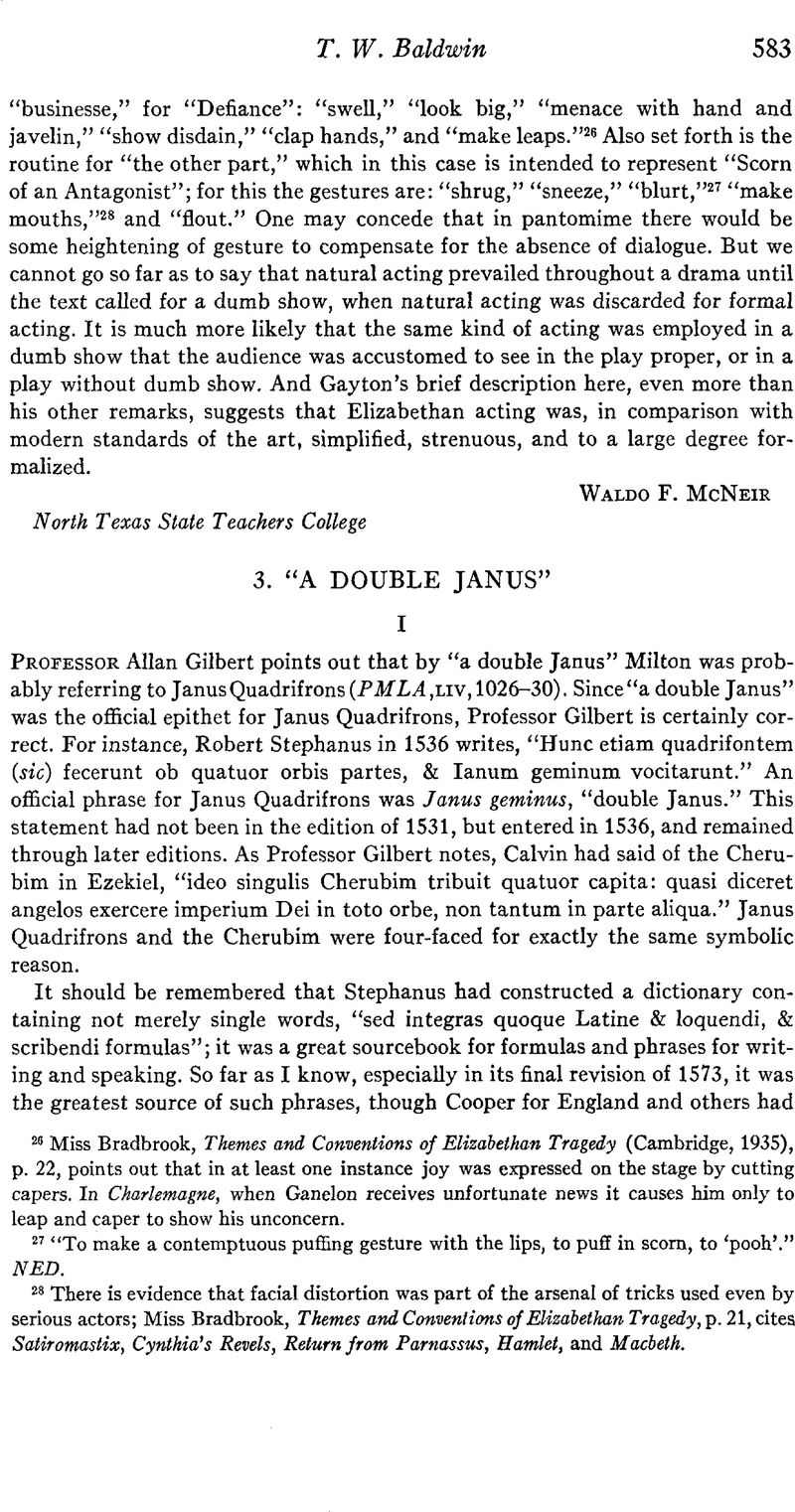No CrossRef data available.
Article contents
“A Double Janus”
Published online by Cambridge University Press: 02 December 2020
Abstract

- Type
- Comment and Criticism
- Information
- Copyright
- Copyright © Modern Language Association of America, 1941
References
Note 26 in page 583 Miss Bradbrook, Themes and Conventions of Elizabethan Tragedy (Cambridge, 1935), p. 22, points out that in at least one instance joy was expressed on the stage by cutting capers. In Charlemagne, when Ganelon receives unfortunate news it causes him only to leap and caper to show his unconcern.
Note 27 in page 583 “To make a contemptuous puffing gesture with the lips, to puff in scorn, to ‘pooh’.” NED.
Note 28 in page 583 There is evidence that facial distortion was part of the arsenal of tricks used even by serious actors; Miss Bradbrook, Themes and Conventions of Elizabethan Tragedy, p. 21, cites Satiromastix, Cynthia's Revels, Return from Parnassus, Hamlet, and Macbeth.


